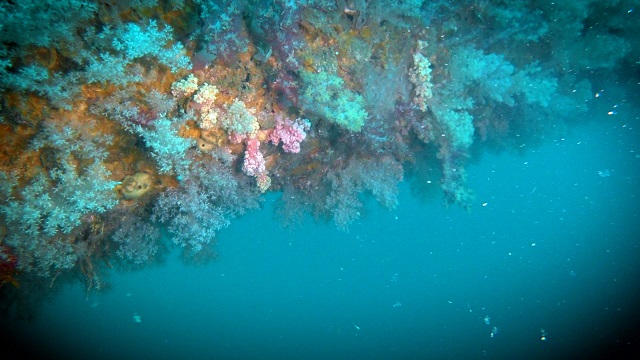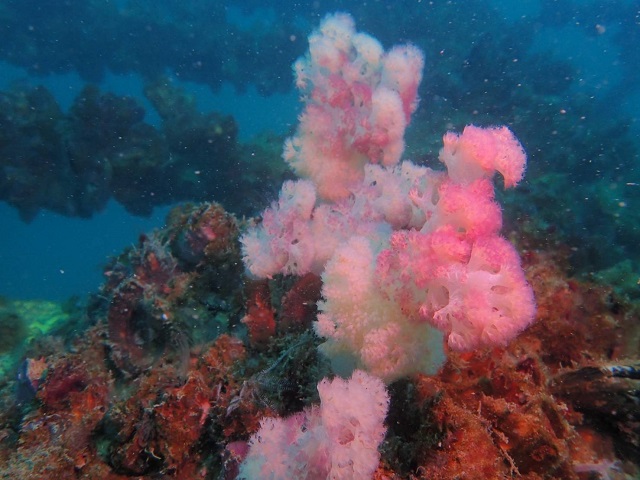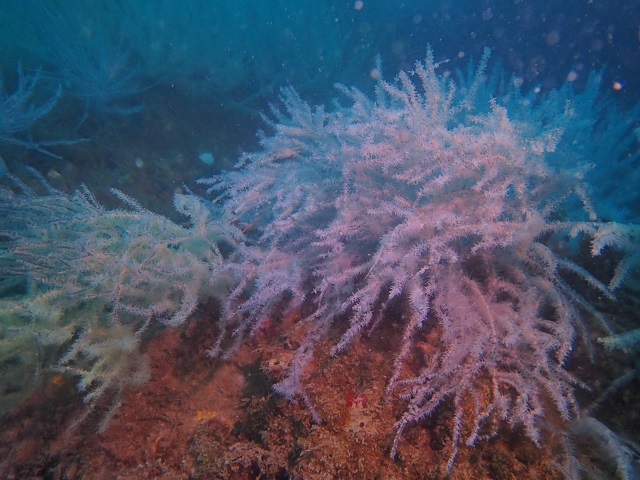press release Artificial Reefs Converted from Retired Platform Jackets proven to help restore Thai marine ecosystems
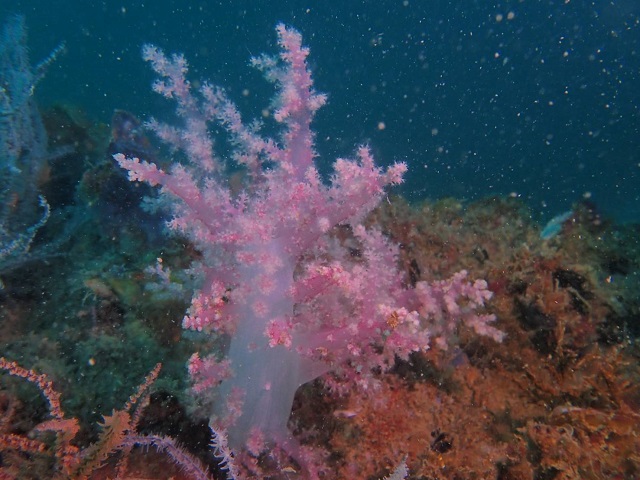
The development of undersea artificial reefs in Thailand has been ongoing for over twenty years, resulting in new coral reef ecosystems in several sites. Modern artificial reefs are based on a variety of material, each producing different outcomes. The use of retired platform jackets as artificial reefs (“Rigs-to-Reefs”) is an innovation, the first placement of which was carried out at a site near Koh Pha-Ngan, Surat Thani. Varawut Silpa-archa, the Minister of Natural Resources and Environment, and his entourage visited the site to check on the status of the artificial reefs and commended the project’s outcome, which was found to be highly satisfactory and showing potential for further development in the interests of conservation of marine and coastal resources and tourism. As part of this occasion, the Department of Marine and Coastal Resources was requested to join forces with its partners in learning from and closely monitoring all aspects of the after-effects.
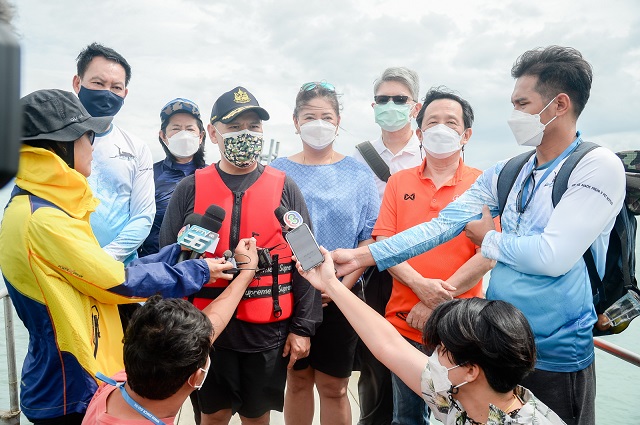
Varawut Silpa-archa, the Minister of Natural Resources and Environment, revealed after his visit to Koh Pha-Ngan, Surat Thani, that he had always taken seriously the restoration of marine ecosystems and been looking for ways to preserve and rehabilitate Thai coral resources in a sustainable manner. Having looked at the report and underwater photographs from a reconnaissance team of divers at the site of artificial reefs near Koh Pha-Ngan, Surat Thani, converted from seven retired platform jackets provided by Chevron Thailand Exploration and Production Company Limited, the Minister was highly satisfied with the state of the new ecosystems, showing potential for developing into thriving and beautiful coral reef ecosystems, a conservation site, and an effective tourist attraction in the future.
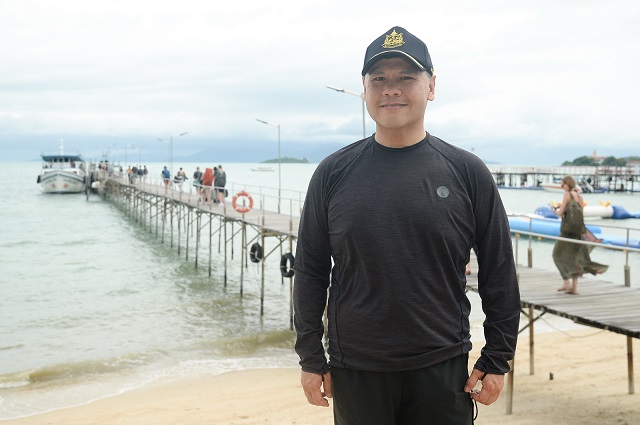
“However, I have insisted that the Department of Marine and Coastal Resources carefully follows through on the changes and all aspects of the after-effects, learns from the outcomes of this mission, and expand the work into other sites. In addition, I have asked that the techniques, technology, and innovations are studied, so that conservation of nature and the environment could be carried out in a more efficient manner in the future, while also taking into account the academic body of knowledge as well as allowing for public participation in every step of the way. This would depend on multi-party cooperation and an impetus to result-oriented programs.” said Varawut Silpa-archa
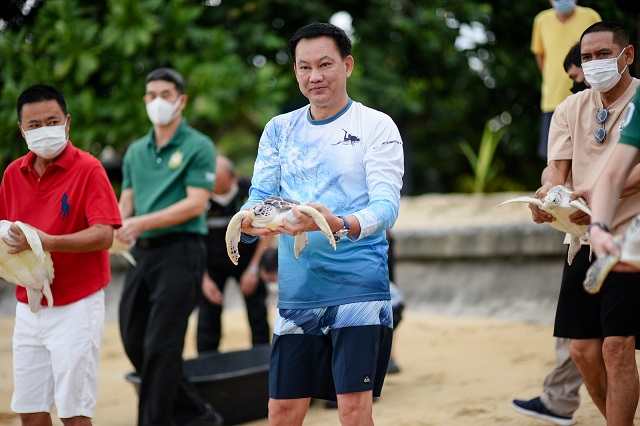
Sopon Thongdee, Director-General of Department of Marine and Coastal Resources added, “The use of environmentally friendly material as artificial reefs has been an ongoing effort of the Department of Marine and Coastal Resources (DMCR) for over ten years. Over 150,000 pieces of artificial reefs have been placed undersea, resulting in over 36,000 rai of new coral reefs. The placement of artificial reefs converted from retired platform jackets at Koh Pha-Ngan, Surat Thai, has been approved by the National Committee on Marine and Coastal Resources Management Policy and Planning, chaired by Deputy Prime Minister Prawit Wongsuwan. After the placement of retired platform jackets as artificial reefs completed in September 2020, the DMCR issued an order on the measure for the protection of coral resources at the site, in force from 8 March 2021 to 8 March 2023. It prohibits fishery by all means, diving tourism, or any activity at risk of disturbing corals and organisms at the reefed jackets. Its purpose is to accelerate the formation of soft corals and colonization by marine organisms as nursery habitats, thereby efficiently promoting further formation of new coral reefs. The DMCR has also requested that its personnel and a team of academics work together with academic institutions and relevant government agencies to closely monitor the changes for any possible after-effects. The DMCR is in the process of declaring the site as a protected area, pursuant to Article 22 of the DMCR Act.”
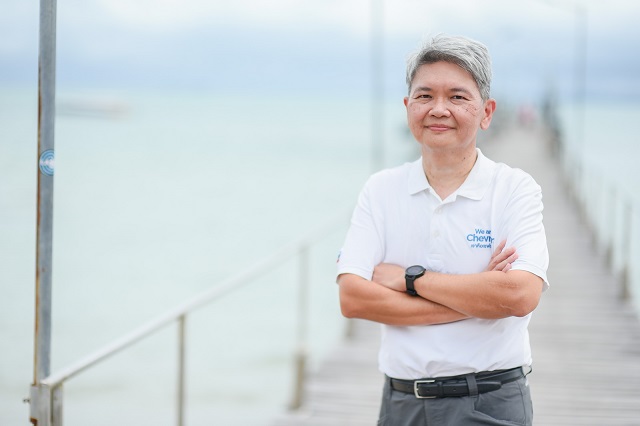
Ajj Tularak, Vice President of Non-Operated Joint Ventures at Chevron Thailand Exploration and Production, Ltd. said, “On behalf of Chevron and its partners, comprising Mitsui Oil Exploration Company Limited and PTT Exploration and Production Public Company Limited, we are pleased with the success of the Pioneering Project on the Use of Seven Retired Platform Jackets as Artificial Reefs, whose outcomes have been satisfactory. The retired platform jackets have proven to become useful as habitats for marine life. Surveys after the placement have found denser colonization and more diversity of fish, as well as recolonization of organisms on the jackets. Surveys of marine environment at the artificial reef site has found it to be at normal levels. We are confident that the artificial reefs would continue to aid the restoration of marine resources, serve as essential nursery habitats for local fishery, and promote tourism business. Chevron remains committed to closely working with DMCR and Chulalongkorn University, and will provide more specialists from academic institutions abroad, as well as state-of-the-art technology, to support the project’s research.”
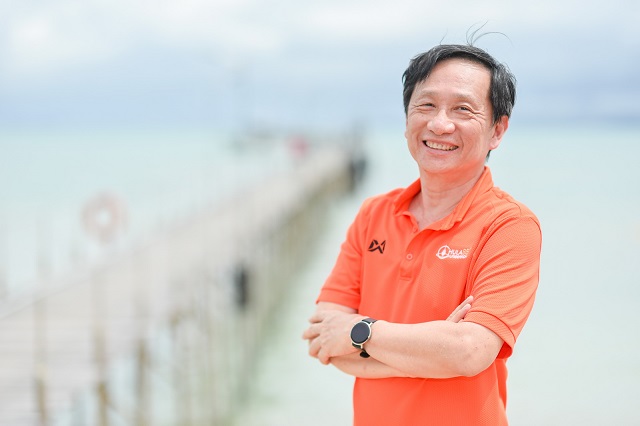
Dr Supichai Tangjaitrong, Managing Director of Chula Unisearch added, “Over the past one year after the placement of the artificial reefs, Chulalongkorn University closely and continuously followed up on the project with surveys and assessment of environmental changes, as well as other marine ecological effects. The results, which also took into account three rounds of socio-economic study, were highly satisfactory. They encompass five main aspects of the overall outcomes: marine environment, fish population, recolonization of sessile organisms, movement of the reefed jackets, and benefits to the local communities. Chulalongkorn University remains committed to further study on changes in other aspects, in accordance with the two-year framework for the post-placement follow-up, starting in September 2022, with the results expected to come in at the beginning of 2023.”
• Fish population in terms of density and number of species were found increasing from 97 fish/100 sq.m. to 215 fish/100 sq.m., and from 15 to 47 species, respectively.
• Most fish found were economically important, such as those in the family Carangidae (torpedo scads and oxeye scads), Caesionidae (the fusiliers), Lutjanidae (the snappers), and Serranidae (the sea basses and the groupers). Coral reef fishes, such as the butterfly fish (Chaetodonitidae) and the wrasses (Labridae), were found.
Recolonization by organisms, accounted for in three jacket parts
• Part 1: Part of jackets that always above sea level (the top 5 meters): Barnacles, sea squirts, and hydroids were found colonizing almost the whole area.
• Part 2: Part of the jackets previously submerged, but exposed to air during the towing to the reef site (the next 45 meters): Hydroids, barnacles, and gorgonians were found.
• Part 3: Part of the jackets previously submerged and remained submerged during the wet tow (the bottom 25 meters): Over 70% of organisms such as soft corals, orange cup corals, and black corals were found surviving. Overall, soft corals and gorgonians covered around 20–30% of the total area of the reefed jackets.
Socio-economic study with a sample size of over 800
• Overall, local people were satisfied with the project to a medium-to-high extent. They recognized the benefits brought about by an increase in fish population and the promotion of diving tourism in the future.
